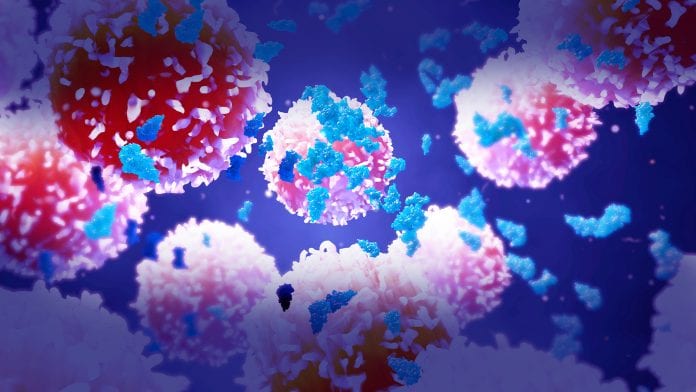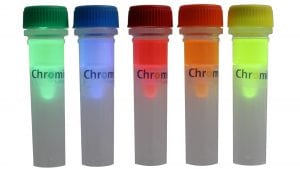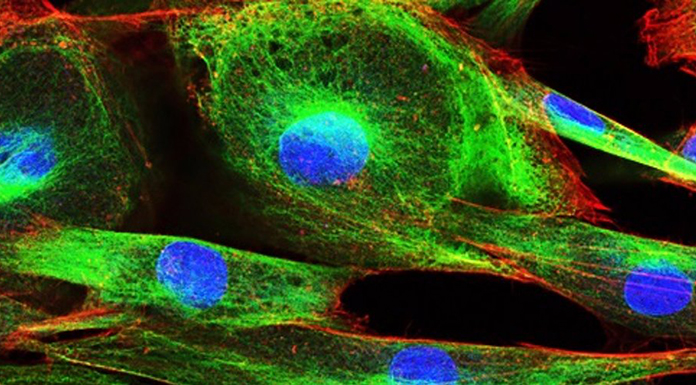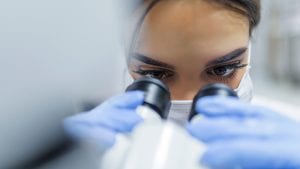
The Digital Histopathology Screening platform can detect multiple biomarkers in a single tissue section, leading to personalised cancer treatment and improved patient outcomes
Cancer is a global health priority, with more than 18 million new diagnoses and 10 million deaths each year. It is estimated that half of us will be diagnosed with cancer during our lifetime and that cancer spend will continue to increase disproportionally above general healthcare spend, reaching £15bn by 2021 in the UK alone, with the cost of cancer care doubling between stages 1 and 4.
The gold standard for cancer diagnosis and treatment selection is the microscopic inspection of a tissue biopsy by a histopathologist. For several years, histopathology services have been under tremendous pressure due to:-
- Experiencing double digit annual growth in demand with the increasing prevalence of cancer,
- Rollout of national screening programmes,
- Healthcare advancement in emerging
- economies and
- The increased use of companion diagnostics and personalised medicine.

Moreover, histopathology is the most expensive and labour-intensive of all the pathology disciplines, accentuated by:-
- A global shortage of pathologists,
- Declining numbers of trainees and
- A quarter being less than 10 years from retirement age.
Precision medicine is now key to the treatment of cancer; the most effective personalised treatment is selected based on the presence of certain biomarkers in tissue biopsy taken from the patient. Under current practice, multiple tissue sections are stained individually with primary antibody biomarkers that bind selectively to the corresponding antigen of cancer cells in the tissue section followed by a secondary antibody labelled dye that binds to the primary antibody enabling an expert pathologist to visualise the biomarkers in the tissue section.
This approach is slow, qualitative and expensive, relying on the laborious microscopic assessment of individual tissue slides by an expert pathologist.

Chromition aims to transform the way histopathology is performed globally, leading to improved patient outcomes through personalised treatment. The Digital Histopathology Screening platform can detect multiple biomarkers in a single tissue section to provide a more detailed picture of disease status and enable stratification of patients for targeted treatment.
The system uses a proprietary multicoloured Luminspheres™ immunohistochemical staining kit specific to the disease being screened, along with high-throughput tissue imaging and quantitative software analysis. The intrinsic properties of multicolour Luminspheres – fluorescing simultaneously and with extraordinarily brightness – enable concurrent detection of multiple cancer biomarkers in a single tissue section.
In this approach, a single tissue section is stained simultaneously with the multicoloured Luminspheres primary antibody biomarker panel, which binds selectively to the complementary antigen of interest in the tissue section. The stained tissue section is then digitally imaged by a high-throughput microscope slide imager equipped with a UVA light source and digital colour camera.

The multicoloured Luminspheres fluoresce simultaneously and a single image captured by the microscope slide imager’s digital colour camera and analysed by software that detects the presence or absence of each biomarker, quantifies the proportion of cells expressing the biomarker and the intensity of biomarker expression at speeds and accuracy not currently possible through human visual analysis. This data is displayed in a dashboard that stratifies patients based on biomarker profile for proactive management of cancer through targeted treatment, leading to improved patient outcomes.
Luminspheres multiplex bioconjugation kits for research use are available online direct from Chromition and in the near future via our global distributor. In addition, Chromition is working with technology partners to validate the digital histopathology screening platform in several cancers, including breast cancer. With 2.1 million new cases per annum – this equates to 12% of all cancer cases – breast cancer is the most prevalent cancer in 154 of 185 countries, the most frequently diagnosed cancer amongst female patients and the leading cause of cancer death in over 100 countries.
Mark McCairn
Chief Executive
Chromition Ltd
mark.mccairn@chromition.com
www.chromition.com
This article is from issue 16 of Health Europa. Click here to get your free subscription today.









